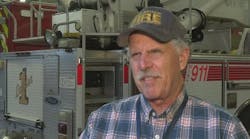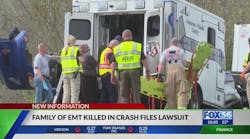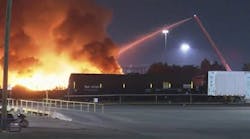March 27--Tom Henricks posed a question to the state Emergency Medical Association in 2012: If South Dakotans can earn master's or bachelor's degree online, why can't they earn an emergency medical technician certificate online?
The question drove Henricks to help start a pilot program that, if successful, would lay the groundwork to allow South Dakotans who want to work on volunteer ambulance crews to take EMT courses online.
"If we can pull this off, we have the potential of changing emergency medical services in the state of South Dakota," said Henricks, ambulance director for Faulk County Ambulance Service.
Ambulance crews in rural areas usually rely on volunteers to make up their teams because it isn't feasible to hire a full-time ambulance crew, he said. People who want to become volunteers must attend twice-weekly classes in larger cities for three months to learn the emergency responder basics.
Henricks referred to classes held in Aberdeen each fall as an example: The classes are from 6 to 10 p.m. Tuesdays and Thursdays for three months, he said. Someone who lives in Faulkton -- 60 miles southwest of Aberdeen -- would have to leave by 5 p.m. and would come home at 11 p.m. twice a week for the length of the course, he said.
"For most people in this busy world, that's pretty restrictive," he said.
Even more difficult is that attendees can miss only two classes. The problem also extends to other rural ambulance crews.
"I'm not the only one. Everyone in the state of South Dakota struggles to staff EMT services," he said.
An estimated 126 ground ambulance crews in South Dakota, 80 percent of which are volunteers, according to figures from the Office of Emergency Medical Services for the State Department of Public Safety.
"Classes are taught by class coordinators that are associated with ambulance services, fire departments and technical schools," said Marilyn Rutz, director for the Office of Emergency Medical Services for the state Department of Public Safety.
She added that she hopes the class is successful, leading to the option of other online classes led by other class coordinators being approved.
The process began at a district meeting of the state Emergency Medical Association in June, when Henrick brought the idea of a online program. The association officers approved the idea for a pilot, said Keith Sharisky, online educational administrator for the course and a paramedic/firefighter with Aberdeen Fire and Rescue. In his role, Sharisky monitors the students' progress online, respond to questions students have and checks if they pass the tests each week.
Students in the course study on their own time and take weekly tests that cover four chapters, with passing grades of at least 80 percent required, Sharisky said.
The pilot program was meant just for three people in Faulkton, but other area emergency response groups that had a limited number of volunteers asked to be part of the program. Six students are enrolled in the online course: three from Faulkton, two from Groton and one from Roscoe. The class was purposefully kept small because it was a trial run and coordinators wanted to minimize errors, Henricks said.
If the trial of the online course is a success, it would provide the grounds for the state Emergency Medical Association to allow other online courses to be implemented in the state.
"If this class is successful, it will allow anybody, anytime, anywhere, within the restrictions the state puts on, to be able to take or operate online classes where students can learn at their own speed," Henricks said.
Copyright 2013 - American News, Aberdeen, S.D.





